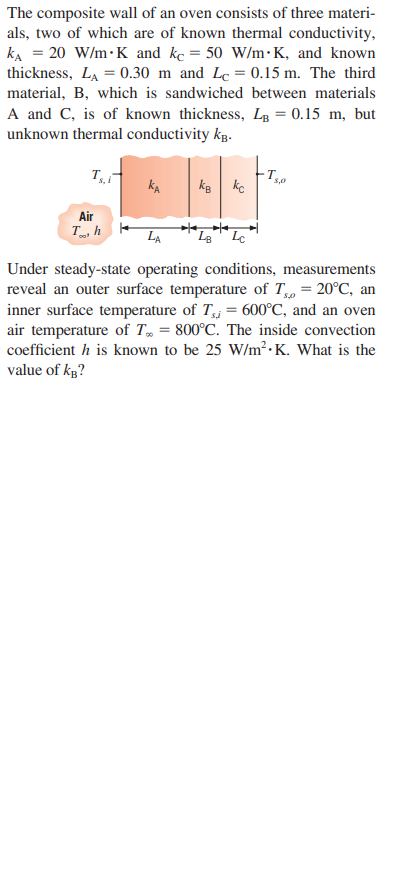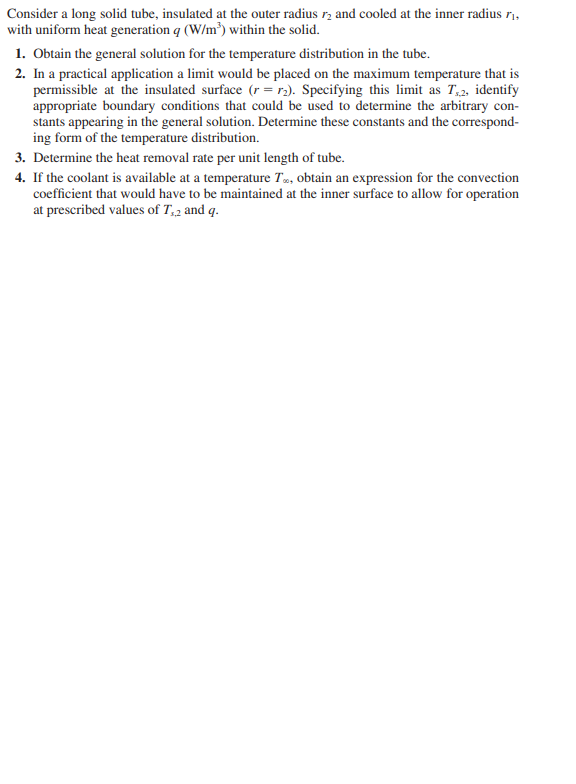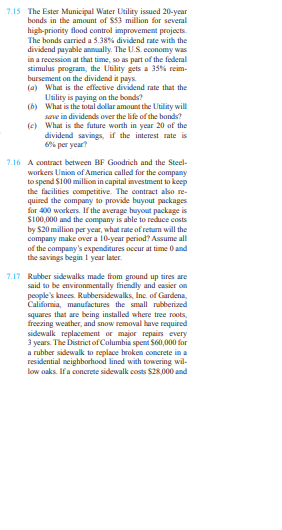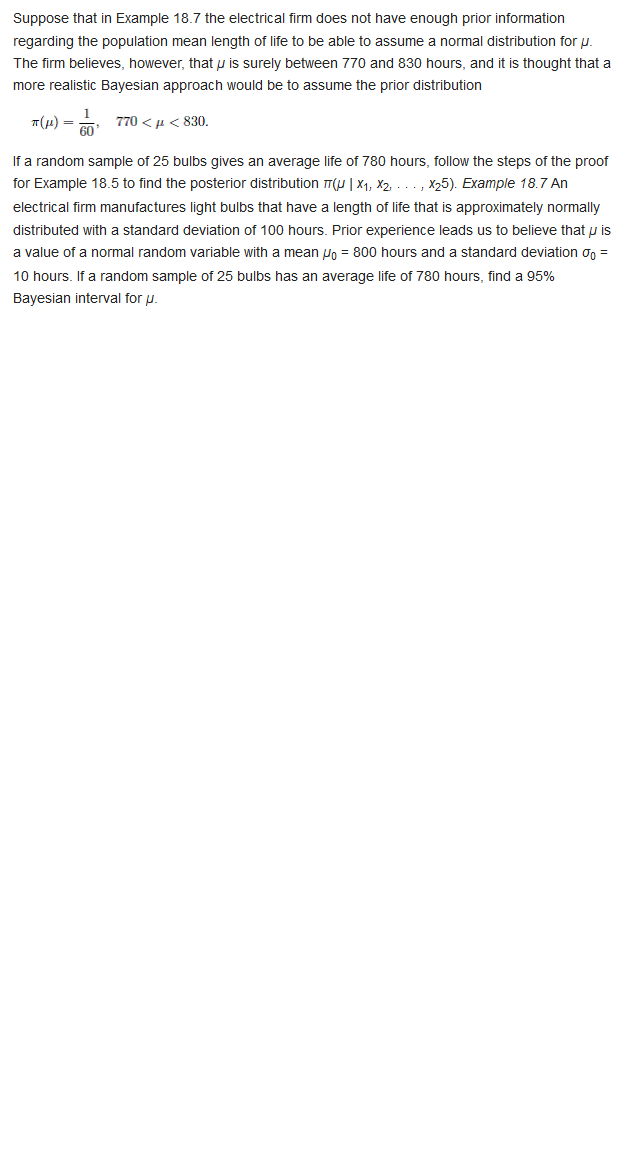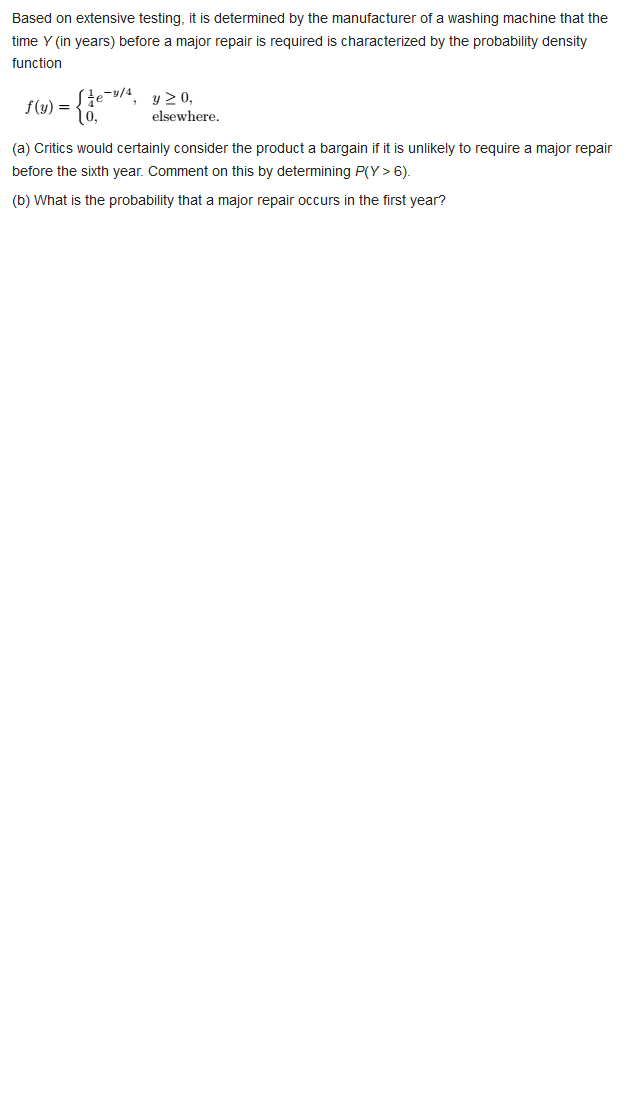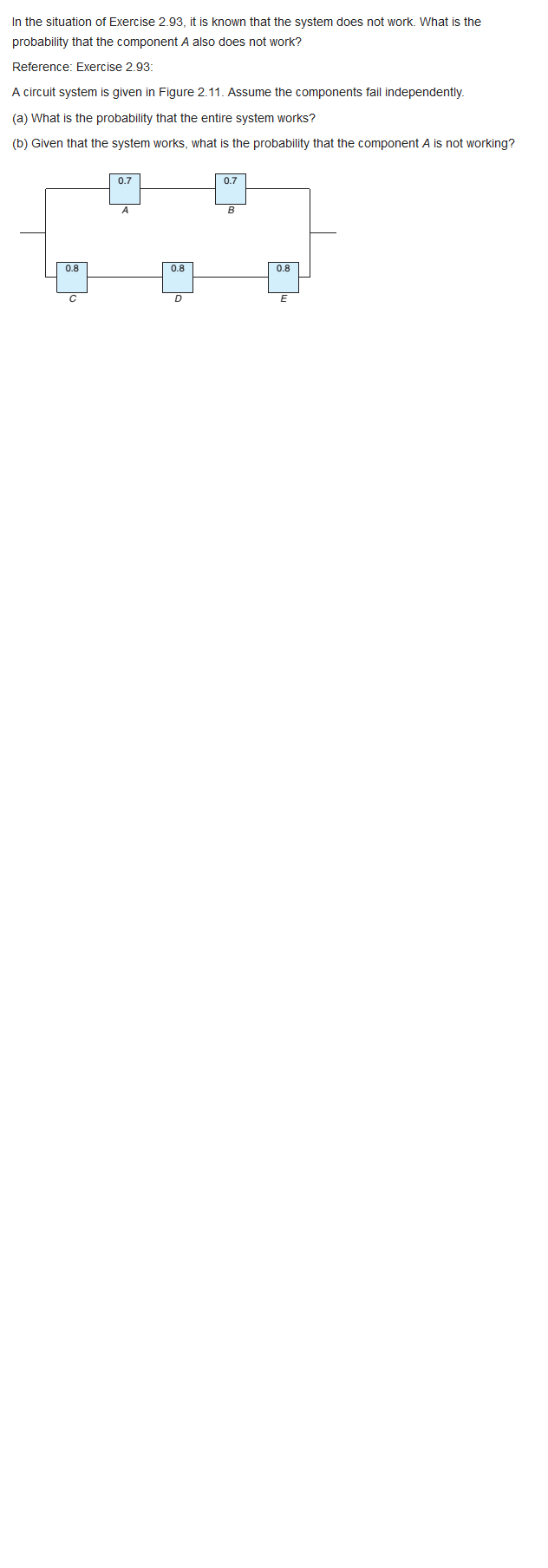solve the question
The composite wall of an oven consists of three materi- als, two of which are of known thermal conductivity, KA = 20 W/m . K and kc = 50 W/m. K, and known thickness, LA = 0.30 m and Lc = 0.15 m. The third material, B, which is sandwiched between materials A and C, is of known thickness, LB = 0.15 m, but unknown thermal conductivity kB- T. KA KB kc Air T, h LA LB Lc Under steady-state operating conditions, measurements reveal an outer surface temperature of T. = 20"C, an inner surface temperature of 7, =600 C, and an oven air temperature of 7% = 800"C. The inside convection coefficient h is known to be 25 W/m' . K. What is the value of KB?Consider a long solid tube, insulated at the outer radius r2 and cooled at the inner radius ri, with uniform heat generation q (W/m ) within the solid. 1. Obtain the general solution for the temperature distribution in the tube. 2. In a practical application a limit would be placed on the maximum temperature that is permissible at the insulated surface (r = r2). Specifying this limit as 7,2, identify appropriate boundary conditions that could be used to determine the arbitrary con- stants appearing in the general solution. Determine these constants and the correspond- ing form of the temperature distribution. 3. Determine the heat removal rate per unit length of tube. 4. If the coolant is available at a temperature 7%, obtain an expression for the convection coefficient that would have to be maintained at the inner surface to allow for operation at prescribed values of 7}2 and q.6.29 Blanton Agriculture of Santa Monica, California, offers different types and levels of irrigation water conservation systems for use in areas where groundwater depletion is a serious concern. A large farming corporation in India, where deple- tion is occurring at an alarming rate of 1.6 inches (4 centimeters) per year due to exponential growth in usage for crop irrigation, is considering the purchase of one of the Blanton systems. There are three options with two levels of automation for the first two options. The estimated costs and as- sociated cash flow diagrams over a 10-year pc- riod are summarized below and on the next page, respectively, for each of the five alternatives. Costs are categorized as design (Des), develop- ment (Dev), and operation (Oper). For alterna- tives A and B, there is an extra cost of $15,000 per installation year to maintain the manual system in place now. Level 2 development costs are distribu uted equally over a 2-year period. Alternative C is a retrofit of the current manual system with no design or development costs, and there is no level 1 option. At an interest rate of 10% per year and a 10-year study period, determine which alterna- tive and level has the lowest LCC. Cost Level Level Alternative Component 1 2 A Des $100,000 $200,000 Dev 175,000 350,000 Oper 60,000 55,000 Install time 1 year 2 years B Des $ 50,000 $100,000 Dev 200,000 500,000 Oper 45,000 30,000 Install time I year 2 years C Oper $100,0007.15 The Ester Municipal Water Utility issued 20-year bonds in the amount of $53 million for several high-priority flood control improvement projects. The bonds carried a 5.38%% dividend rate with the dividend payable annually. The U.S. economy was in a recession at that time, so as part of the federal stimulus program, the Utility gets a 35%% reim- bursement on the dividend it pays. [a) What is the effective dividend rate that the Utility is paying on the bonds? (b) What is the total dollar amount the Utility will sank in dividends over the life of the bands? (c) What is the future worth in year 20 of the dividend savings, if the interest rate is 8% per year? 7.16 A contract between BF Goodrich and the Steel- workers Union of America called for the company to spend $100 million in capital investment to keep the facilities competitive. The contract also re- quired the company to provide buyout packages for 400 workers. If the average buyout package is $100,000 and the company is able to reduce costs by $20 million per year, what rate of retum will the company make over a 10-year period? Assume all of the company's expenditures occur at time 0 and the savings begin 1 year later. 7.17 Rubber sidewalks made from ground up tires are said to be environmentally friendly and easier on people's knees. Rubbersidewalks, Inc. of Gardena, California, manufactures the small rubberized squares that are being installed where tree roots, freezing weather, and snow removal have required sidewalk replacement or major repairs every 3 years. The District of Columbia spent $60,000 for a rubber sidewalk in replace broken concrete in a residential neighborhood lined with towering wil- low oaks. If a concrete sidewalk costs $28 000 andIn Example 1.7, the temperature at the inner surface of the skin/fat layer was given as 35"C. In reality, this temperature depends on the existing heat transfer conditions, include ing phenomena occurring farther inside the body. Consider a region of muscle with a skin/fat layer over it. At a depth of L. = 30 mm into the muscle, the temperature can be assumed to be at the core body temperature of 7, = 37"C. The muscle thermal conductivity is k, = 0.5 W/m . K. The metabolic heat generation rate within the muscle is 4,, = 700 W/m'. The perfusion rate is w = 0.0005 s"; the blood density and specific heat are p, = 1000 kg/m' and c, = 3600 J/kg . K, respectively, and the arterial blood temperature 7, is the same as the core body temperature. The thickness, emissivity, and thermal conductivity of the skin/fat layer are as given in Example 1.7; perfusion and metabolic heat generation within this layer can be neglected. We wish to predict the heat loss rate from the body and the temperature at the inner surface of the skin/fat layer for air and water environments of Example 1.7.\f\f\f
